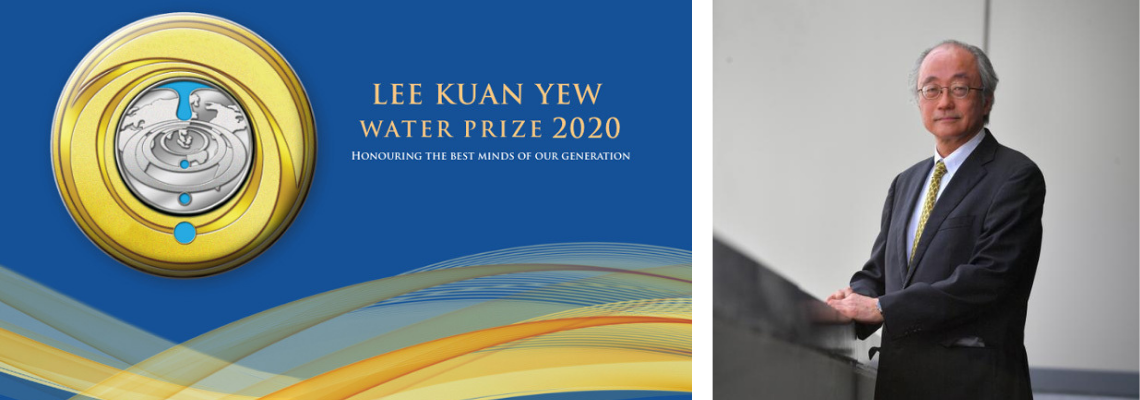Who is Kazuo Yamamoto? MBR king takes Singapore prize

Professor Kazuo Yamamoto, the pioneer of submerged MBR has won the prestigious Singapore prize. Who is the professor?
Pioneering submerged MBR
Professor Kazuo Yamamoto is the latest to win the prestigious Lee Kuan Yew Water Prize but what’s the Professor’s origin story, and why is he a key figure in the water market?
Known as a pioneer in the water sector, Yamamoto’s story can be traced back to the mid-1980s when he proposed his idea for submerged membrane bioreactors (MBR).
At first, like so many disruptive innovators, his idea was met with scepticism, doubt, and even having it dismissed as a 'crazy idea'.
The idea came to him in 1984, when working in his small laboratory he found he had no space to place his membrane system externally to the wastewater. As a result, he was left with no choice but to submerge it.
While the membrane system did eventually clog, Professor Yamamoto noticed how clear the water was. "I was convinced by [this solution], and I resolved to make it work," he said.
Crazy idea or not, Professor Yamamoto was determined to prove the sceptics wrong and in 1988 built a prototype of his MBR for the then-International Association on Water Quality conference.
“Like so many disruptive innovators, his idea was met with scepticism, doubt, and even having it dismissed as a crazy idea.”
Despite MBR existing before Professor Yamamoto's presentation at the conference, earlier designs could not be optimised for large-scale use due to their significant energy draw and tendency to foul.
Professor Yamamoto's design operated using submerged hollow fibre membranes intermittently in the biological treatment tank.
This allowed him to circumvent both the energy-intensive recirculation loop and membrane fouling issues present in earlier MBR designs, considered at the time as a breakthrough in used water treatment and water reuse.
On top of this, he chose not to patent the rights to his invention, meaning extensive research and development, and commercialization efforts could be carried out.
The result? Rapid acceleration for the adoption of submerged MBR technology for water treatment. And over 30 years on, Professor Yamamoto's MBRs benefit millions around the globe.
Who is Kazuo Yamamoto?
Born in Tokyo, Kazuo Yamamoto graduated from the Department of Urban Engineering, the University of Tokyo in 1977, and received his Master's in 1979 and his Ph.D. in 1983 from the same institution.
In 1985, Professor Kazuo Yamamoto was appointed as Associate Professor at the Faculty of Engineering served as Professor at the Faculty of Engineering and then the Environmental Center and the University of Tokyo in 1995.
But water pollution has driven him from a young age. “I was born in Tokyo, and at that time, water pollution and pollution were very serious in Japan,” Professor Yamamoto recalls.
Since 2010, Professor Yamamoto has served as the President of the Water Reuse Promotion Center in Japan.
“Professor Yamamoto's decision not to patent his submerged MBR technology cannot be understated.”
He has also advised on national used water treatment projects around the world since 2007, such as a low-energy demo used water treatment plant (WWTP) for industrial used water reuse in Saudi Arabia and Myanmar’s first MBR-based WWTP.
Professor Yamamoto's work in submerged MBR has won him many accolades including: the Sidney Loeb Award (European Desalination Society, 2008), the Membrane Technology Award (Membrane Technology Specialist Group, International Water Association, 2009), and the Academic Award (Japan Society on Water Environment, 2013).